What Kind Of Animal Makes Holes In The Ground And Burrows Top Of The Ground
A surprising number of animals dig burrows. Dogs and wolves and even polar bears dig dens for themselves and their families, just can they be considered burrowing animals? For the purposes of this blog, a burrowing brute is one that spends much of its life in its burrow and has a burrow that has a network of tunnels and chambers that serve different purposes, such as food storage, sleeping areas, or nurseries. Here are 9 of these animals:
#9. Animals That Couch Hole-and-corner: Naked Mole Rat
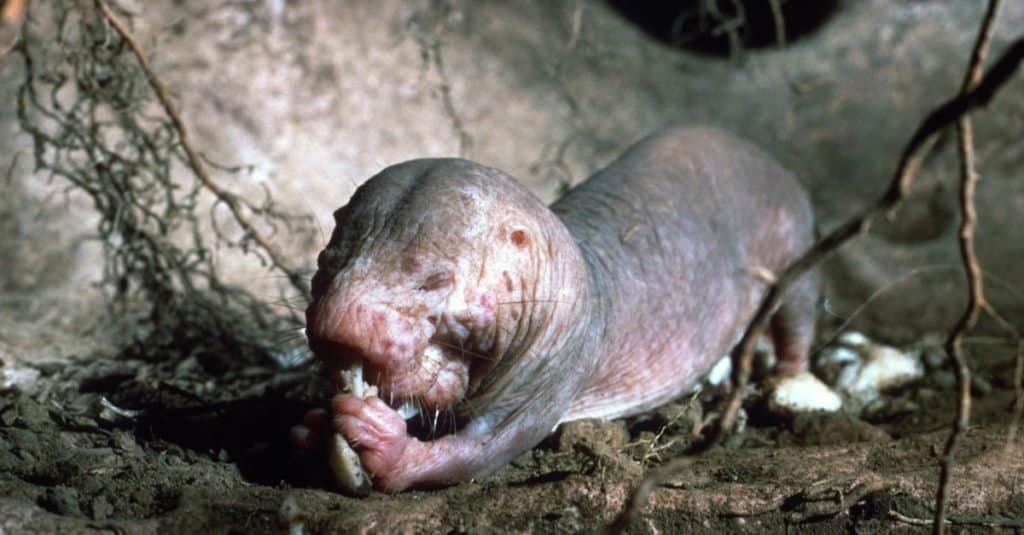
Neil Bromhall/Shutterstock.com
This weird trivial beast lives in colonies that are more like those of ants and termites than mammals. The colony is dominated by a queen, and she's the just female who is allowed to breed. Equally with bees, reproducing is her only job, and all the other naked mole rats in the colony exercise the work of raising the babies, protecting the colony from invaders, and keeping the tunnels and chambers in lodge.
Naked mole rats are nearly blind but do not need to see well in the perpetual darkness of their burrows. These remarkable creatures, which are establish in east Africa, tin can go without oxygen for long periods, take a high pain threshold, and don't seem to actually historic period. Their lifespan is astonishingly long for a rodent. They've been known to live every bit long as 30 years.
#8. Animals That Couch Secret: Mouse Spider
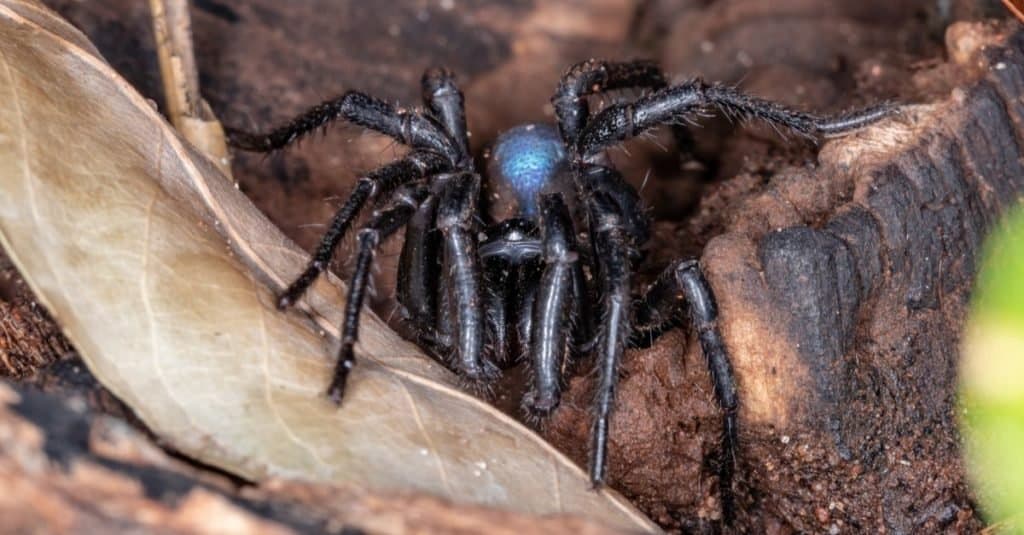
Vinicius R. Souza/Shutterstock.com
This robust spider lives in Australia, and the females are the ones that construct burrows and spend much of their lives inside of them. Mouse spider females are solid black, while some males have colors specific to their species, such as the red-headed mouse spider.
The burrows of this spider can exist viii to 22 inches deep and are lined with silk. There'southward a chamber off the master tunnel that has a trapdoor and is used to protect the adult spider, her eggs, and hatchlings from predators. Some mouse spider burrows have two doors while others have one. Silken triplines allow the spider know whether prey or an interested male is in the vicinity.
#seven. Animals That Couch Hugger-mugger: Prairie Dog
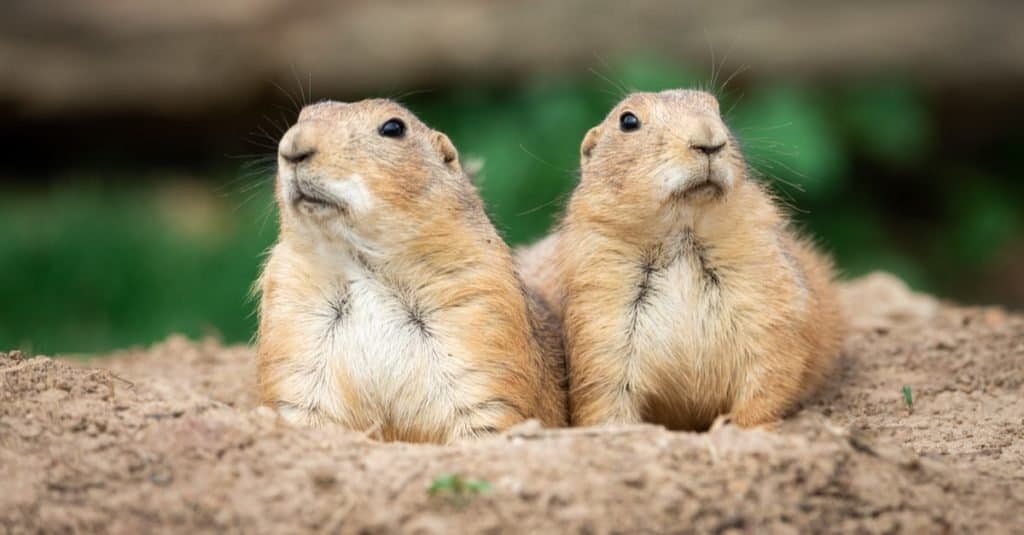
AB Photographie/Shutterstock.com
The prairie dog is a type of squirrel famous for its "towns" made of burrows. Information technology'southward found largely in the western United States and Mexico. Though these burrows were sometimes problematic to farmers and ranchers, they play an important role in the ecosystem and the prairie canis familiaris is protected in some areas.
The couch is congenital in a manner that the prairie dogs that live in them can keep warm in the winters and absurd in the summers They have skillful ventilation, go along the tunnels and chambers from flooding, and can exist as long as 33 feet and nearly 10 feet deep. The couch can accept as many as six entrances and have chambers for babies, for sleeping at dark, for shelter in the winter, and for hiding from or even listening for predators.
#6. Animals That Burrow Clandestine: Bilby
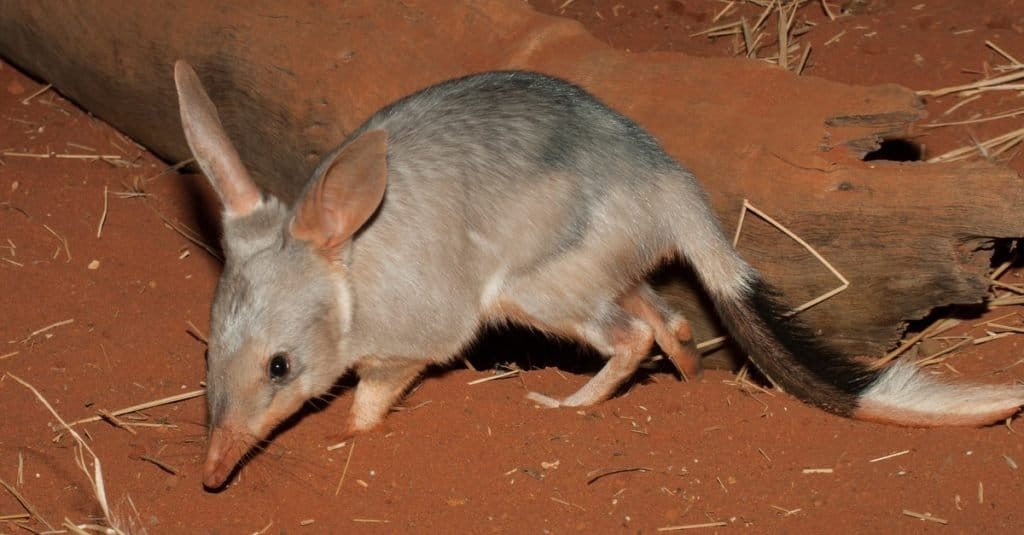
Another denizen of Commonwealth of australia, the little bilby has long, rabbit-like ears, a body like a kangaroo'due south, and a tail like a possum'southward. It's a marsupial, and the female'southward pouch opens towards the back, which keeps dirt out of information technology as she digs her burrow.
Bilby burrows are unique in that they screw downwardly, which gives the animal an actress margin of protection from a predator. The tunnels can be 10 feet long and vi.five feet deep, and a bilby often has more than than i. Afterward they've left their mother'southward pouch, young bilbies stay in the burrow while she leaves to fodder at sunset. Both male person and female bilbies take burrows, and males leave their scent non only at the archway to their burrow simply at the entrance of a female they recently mated with. This is supposed to deter other male bilbies.
#v. Animals That Burrow Secret: Mole

Carmen Rieb/Shutterstock.com
The mole of the Talpidae family is perfectly congenital for a burrowing lifestyle. Its expertise at burrowing and digging has made it a fleck of a pest in many places. The European mole, which is found from western Europe and east into Russia, lives in a central sleeping room from which radiate a number of tunnels. Since it lives mostly hush-hush, the mole doesn't need good vision, so its eyes are tiny. At the same time, its senses of olfactory property, touch, and hearing are acute.
The mole has velvety, dumbo fur and huge, outward-facing front paws with strong claws and extra thumbs. The dorsum paws are diminished, but its shoulder muscles are powerful. Moles beloved earthworms, and their saliva actually has a toxin that paralyzes the worm for a while. This lets the mole take it back to a chamber used as a larder and then information technology can eat the worm fresh afterward. Interestingly, moles are good swimmers, and the tiny tentacles that give North America's star-nosed mole its name assist the animal find casualty in water.
#four. Animals That Burrow Underground: Termites

Mr.Parichat chaikuad/Shutterstock.com
Though some termite mounds can abound many feet above the ground and terminal for centuries, they as well create burrows, or nests in the ground and rotting wood. Termites are establish everywhere on earth, salvage Antarctica. They build their nests of feces, soil, and partially eaten wood or other plant material, and there are some termite species that create many interconnected nests that are called calies. These nests are as intricate as any apartment complex and serve much of the same function. They protect the termites from choppy weather, predators, and illness and are places to raise their young and store food.
As with mole rats, there is a fertile queen and a king who is her mate for life. At that place may be a secondary or 3rd queen. Soldiers defend the nest, and workers practise just almost everything else, including taking care of the queen, whose abdomen sometimes swells so much with eggs that she tin can't move. They continue the nest in good repair and intendance for the eggs and nymphs. Workers are also the termites who detect food, digest cellulose, and feed their nestmates.
#3. Animals That Burrow Undercover: Badgers

Martin Mecnarowski/Shutterstock.com
Badgers are as well made for digging burrows, with their squat, low-to-the-ground bodies and long, strong claws. Most badgers are related to weasels and have the diagnostic long head and snout and small ears. They are found around the world except for South America, Australia, and the Arctic and Antarctic regions. A badger burrow is called a sett, and they tin live there past themselves or in family groups chosen cetes.
Like the burrows of prairie dogs, the badger sett has several entrances and interconnected tunnels. The tunnels tin can stretch for 980 feet and can be half dozen.half-dozen anxiety deep, with chambers for raising babies or sleeping. The tunnels are wide to accommodate the badger's wide body. Often, debris like old bedding or fifty-fifty the old bones of expressionless badgers are found heaped at the entrances to a sett. At that place is ofttimes one large sett with a number of satellite setts around it.
Badgers don't even have to dig their burrows in the soil. They've been known to dig under building foundations, walkways, and paved roads. In places where information technology gets very cold, badgers dig sleeping chambers beneath the frost line, and a number of them will sleep in the same bedchamber for warmth.
#2. Animals That Couch Cloak-and-dagger: Burrowing owl

Mauricio S Ferreira/Shutterstock.com
The burrowing owl is one of the few types of birds that live in a proper couch. Indeed, it nigh often moves into burrows vacated by prairie dogs. Information technology's found in the grasslands of North and South America.
This little owl is also unusual in that it is active during the day, while other owls are active at night. They are like prairie dogs in that they'll sometimes alive in colonies of other burrowing owls, and they sometimes alive close to farms, highways, and houses. They've fifty-fifty been found along airport runways. Some other interesting trait of the burrowing owl is that it will non only retreat into its burrow if it's threatened but brand noises that remind its pursuer of the dangerous rattlesnake.
The burrowing owl makes its nest in the burrow, which information technology lines with cow dung. This helps control the environs and attracts insect prey. Information technology also spreads this dung around the entrance of the burrow. During the breeding season, the female person incubates the eggs while the male feeds her, and after the chicks hatch both parents take care of them.
#1. Animals That Burrow Underground: Rabbit
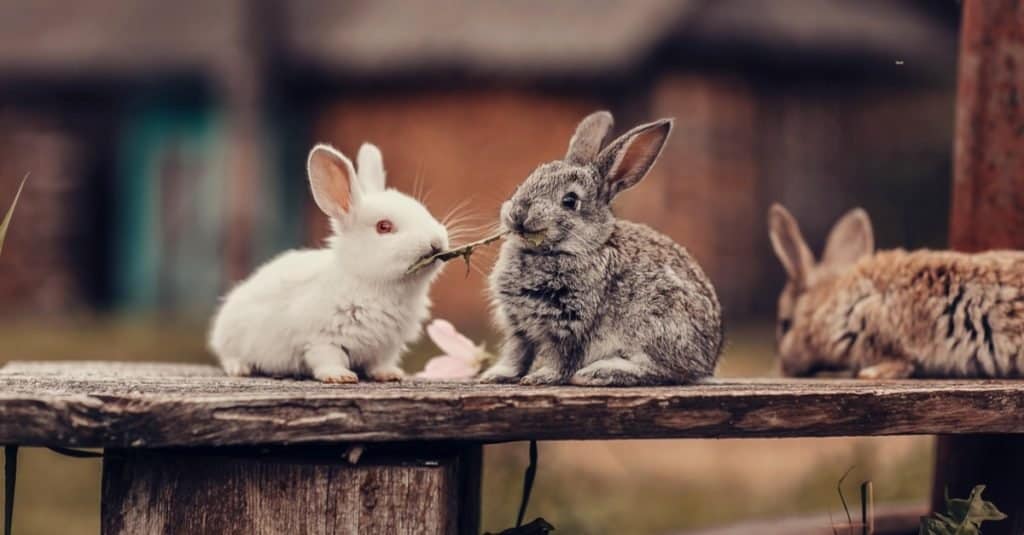
Anna Ipatjeva/Shutterstock.com
Rabbit burrows are famously called warrens, and they are interconnected burrows. Rabbit warrens can be made past the rabbit or manmade in the grade of pillow mounds. They have more than than ane opening and a number of chambers and are usually about 6.5 anxiety deep. Rabbits ordinarily build them on slopes or river or stream banks because of the better drainage, but they're able to build a warren just about anywhere that the rabbit can dig. Rabbits spend much of the day in their burrow and come up out at dark to forage.
When it's time to breed, the female builds a carve up burrow inside of the warren chosen a cease and lines it with her own fur and plant cloth. Later on the babies are born, the mother volition close upwardly the chamber with soil while she goes foraging. This keeps the infant rabbits warm and protects them from threats, which, by the way, can include their own father.
In addition to all animals mentioned on this list, some species of snake likewise burrow undercover.
Next Upward: Chipmunk vs Squirrel: seven Main Differences Explained
Source: https://a-z-animals.com/blog/top-9-animals-that-burrow-underground/
Posted by: branchligival.blogspot.com

0 Response to "What Kind Of Animal Makes Holes In The Ground And Burrows Top Of The Ground"
Post a Comment